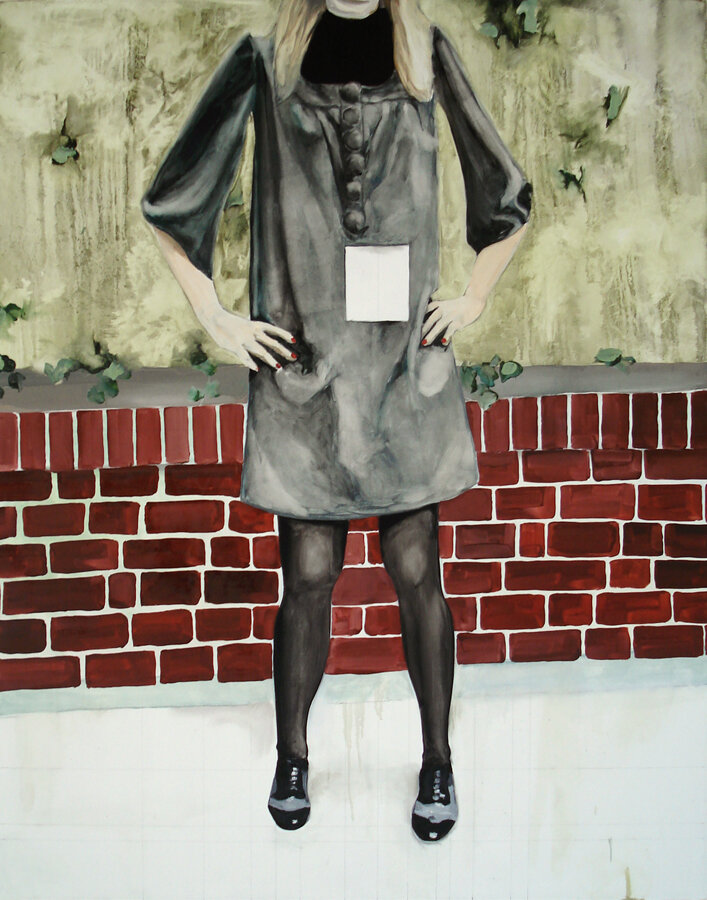
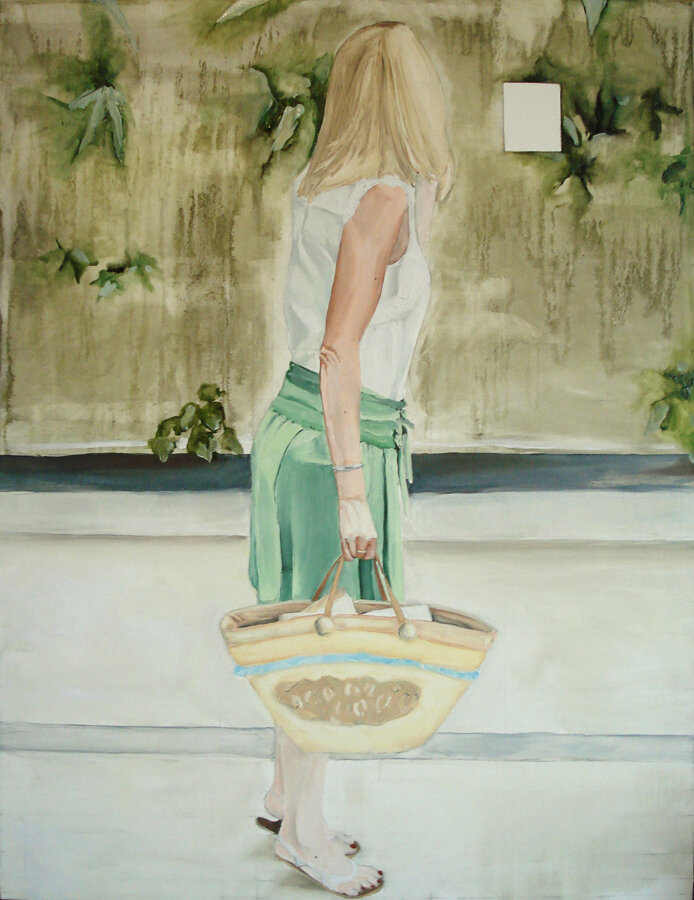
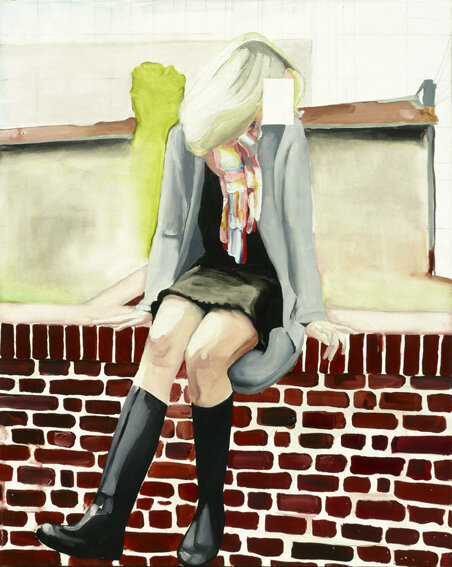
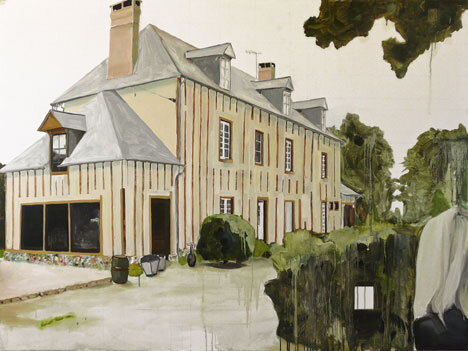

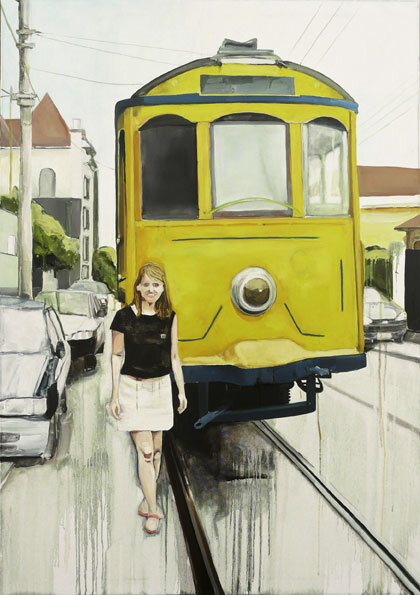
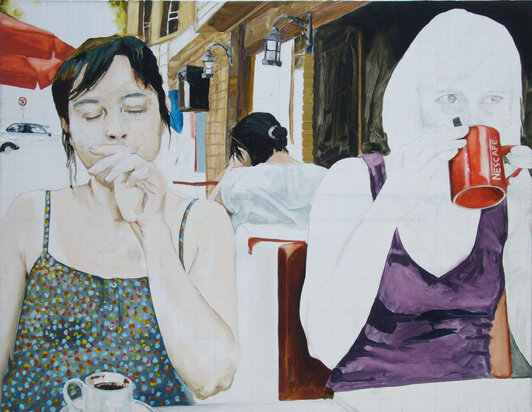

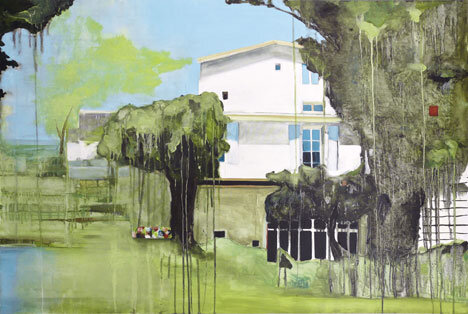
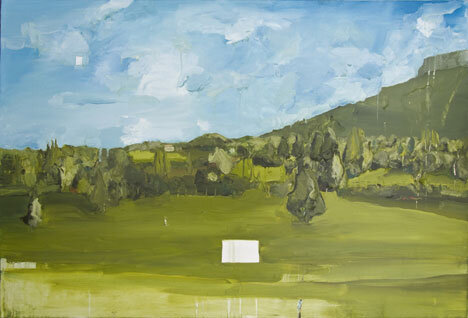
PARIS
David Lefebvre
Dans le désordre
January 16 - March 6, 2010
Chaque jour, pour ainsi dire, David Lefebvre collecte des images. Des images diverses, souvent médiocres en qualité et d’apparence banale : photos découpées dans des magazines ou prises avec un téléphone mobile, captures d’écran ou encore – et surtout – images glanées sur le net. Il y a des personnes aussi bien que des paysages, des amis proches comme de parfaits inconnus ; des paysages champêtres comme des sites urbains. Des images prises dit-il « dans le désordre » – c’est le titre de l’exposition – et qui forment le point de départ de « tableaux » peints à l’huile sur toile. Cette transposition d’une image média en peinture n’est pas, contrairement à ce qu’on pourrait croire a priori, un procédé si couramment utilisé en France par les artistes de la nouvelle génération plus souvent fascinés par les possibilités offertes par les nouvelles technologies. Or non seulement David Lefebvre opère-t-il cette « reproduction » par les seuls moyens de la peinture, mais encore il a recours à ses procédés les plus classiques comme la « mise au carreau » permettant de cadrer et d’agrandir le sujet à sa convenance. Ainsi, partant d’une image très pauvre, de basse définition, il ne cherche pas à masquer cet état mais à le préserver jusqu’au stade final du tableau terminé dont l’aspect parfois « inachevé » montre le tracé au crayon de la grille sur la toile. Quitte à malmener ces systèmes mis en place sur de petits formats, David Lefebvre cherche à en repousser les limites toujours plus loin : « Cela m’a permis, dit-il, de libérer pas mal de choses, au niveau de la touche, des coulures, le fait d’accepter de laisser des zones non peintes qui là, pour le coup, sur des formats plus importants deviennent réellement présentes et font partie intégrante de la peinture. » Parfois, il n’hésite pas à emprunter une solution plastique qu’il juge parfaitement réussie par d’autres. « Du coup », avoue-t-il, « je me retrouve dans une sorte de fantasme de la copie qui peut être parfois moteur dans ma peinture. Il m’arrive de choisir une image parce que je vais avoir envie d’obtenir le même rendu qu’une image d’une peinture de Peter Doig, par exemple. »
Récemment, en surfant sur le net, David Lefebvre a été suffisamment attiré par le blog d’une jeune femme pour en suivre l’actualité pendant plusieurs mois. Celle-ci s’y montre en diverses occasions de sa vie quotidienne, mais prend la précaution de rester anonyme en plaçant un rectangle blanc sur son visage. On pense au fameux « rectangle blanc » en guise d’avertissement parental des programmes de films à la télévision dans les années 70 – et de fait, les images des émissions de télé-réalité sont ses premières sources d’inspiration. Mais, il s’agit d’abord pour lui d’une « fenêtre », comme la réminiscence de toutes ces maisons, dont il fait dès l’origine l’un de ses thèmes de prédilection : « Parallèlement à des portraits », dit-il, « je peignais des maisons. Ces tableaux étaient vidés de la plupart des éléments qu’on pourrait s’attendre à trouver dans un paysage avec une maison, il arrivait qu’il n’y ait même plus de fenêtre. Cela devenait des sortes « d’objets-maisons ». L’aspect s’y prêtait bien car c’était souvent des maisons Phenix et je voyais ça un peu comme des portraits par absence. »
Les citations de David Lefebvre sont extraites du catalogue David Lefebvre, production Ville de Bourg-la-Reine & Galerie Zürcher, 2009
Bernard Zürcher : David Lefebvre your pictures are chosen, according to you, "in no particular order". There are people as well as landscapes, people you know, as well as anonymous individuals ; countryside as well as urban sites, sometimes familiar, sometimes distant. Their origins are both diverse and mediocre, sometimes banal : photos cut out of magazines or taken with a mobile phone, or again – and in particular – images gleaned from the Internet. In a highly illuminating text, Stephane Sauzedde has designated this as "low-def painting". Because it’s not so much the banality of the image as its "poverty" that’s meant to be operative ; it’s the lack of information, due to the low level of definition, that leaves open the possibility of painting. This is expressed by the apparent pencilled trace of the grid on the canvas that’s visible in the lacunae of the representation – a painting that’s apparently incomplete, yet finished. This "squaring" is a well-known formal procedure which also corresponds, in architecture, to the final stage in the construction of a house. It’s clearly the kind of subject that’s far from being a matter of indifference to you.
David Lefebvre : That meant I could free up quite a few things, in terms of the touches, the drips, the acceptance of unpainted zones which, in the larger formats, take on a real presence as integral parts of the painting.
More recently, surfing on the web, I got sufficiently interested in a young woman’s blog to follow it for several months. She showed a number of scenes from her daily life, but took the precaution of remaining anonymous, placing a white rectangle over her face. And here one might think of the famous "white rectangle" that warned parents about the dangers of films on French TV in the ’70s…
I was immersed in that universe as a child, like most other members of my generation. And it’s also one of the points of departure of my work, given that the first paintings I produced were large-format portraits of television presenters (Laurence Boccolini and Jean-Luc Delarue, for example), or participants in TV reality shows. I saw that as a way of putting forward – and especially with the use of oils – the fact that for our generation they represented "new icons". I sometimes organised my schedule around the times of certain programmes, series or films. But in parallel with the portraits I mentioned, I painted houses. For the most part, these pictures didn’t contain any of the things you might expect to find in a landscape with a house. In some cases there weren’t even any windows. They became like "house-objects". Their appearance lent itself to this, because they were often system-built houses, and I saw them, in a way, as "portraits through absence" of the people who lived in them, no doubt with the underlying idea of addiction to television.
Afterwards, with the development of that great image bank, the Internet, my work changed. But I think this base is still quite visible, and everything that goes with it, everything that derives from the rise of the new media, the way they influence or interfere in our relationships to things, and our social relations.
Bernard Zürcher : "Painting" also, of course, means "matter", which in your work is expressed, in particular, by the presence of drippings. How do you cope with this physical dimension ?
David Lefebvre : There’s something liberating and exciting in the fact of letting paint drip, and accepting the dripping. You don’t know how it’s going to end up. And it’s the principle of leaving room for things to happen, leaving room for accidents, that I appreciate a lot about painters like, of course, Richter, to mention just one. When it’s done, a new grid has been constructed, with which I come to terms, and which guides the rest of the process. I then have an urge to "push" some parts of it further, with heavier, thicker touches ; but also with new drippings that are more accentuated. It’s a way of roughing the picture up a bit so that it appears more natural.
As regards the drippings, obviously it’s an approach to painting that you see a lot these days, with Marc Desgrandchamps, Peter Doig, Johann Rivat and quite a few others. This way of painting gives a result I like. I don’t try to work out how they do it ; and in any case the only thing I see of them, very often, is images I find on the Internet, which have the same status as the ones I use myself. So I end up in a sort of fantasy of the copy that can be a driving force for my painting. At times I choose an image because I want to obtain the same rendering as an image in, for example, a painting by Peter Doig.
